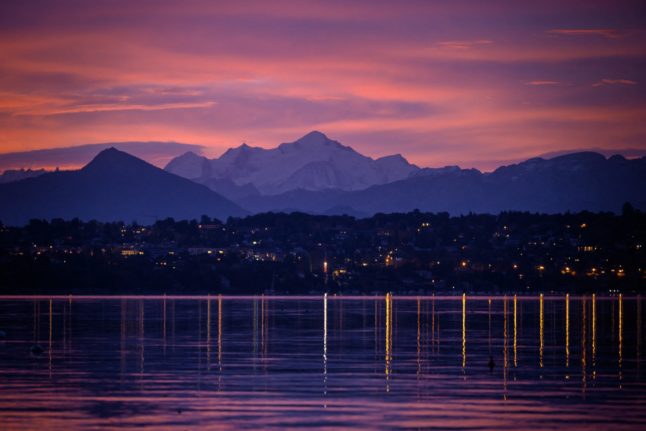If you talk to foreigners and ask them a surprising thing about Switzerland, many will mention the “flying cows”, and pictures of the animals being taken by helicopter up and down the Swiss Alps are not difficult to find.
“The cows in Swiss are taken to the highlands by helicopters for grazing during summers and brought down back again by helicopters in the winters!” wrote one person in an English-speaking forum.
The pictures of airlifted cows can be found all over the Internet, adding fuel to the myth – but the images are not fake.
A cow is transported by helicopter after its summer sojourn in the high Swiss Alpine meadows near Klausenpass, Switzerland. 📷 Arnd Wiegmann
More of our 2021 pictures of the year: https://t.co/msLJ6IA4uX pic.twitter.com/2wzhBMQijh
— Reuters Pictures (@reuterspictures) December 21, 2021
So, are cows airlifted in Switzerland once the summer is over?
Yes, cows really get a free helicopter ride up and down the Alps, but only when necessary.
Injured cows that cannot make the journey walking will not be left to die in the cold mountains during the winter season. Instead, they are taken down to the area where the rest of the herd will join them via helicopter ride.
We just saw a helicopter airlifting a cow from the mountains.
How's your Tuesday going? pic.twitter.com/9X6jXlkyj9
— Pedro Marques 🌮 (@pmarquees) September 1, 2020
Healthy cows going down the Alps are also a sight worth seeing. In the alpine regions, the yearly march of the cows from grazing in the Alps is called “Alpabzug” (something like “drive from the mountain pasture”).
In the French regions, the march is known as “Désalpes”.
Farmers and shepherds will wear traditional clothes and decorate their cows.
The event takes place in early autumn, usually late September or early October. It is determined by the lack of grass, or if any cold spells start, so it depends on the region and can vary year by year.
I prefer cows to people #desalpes 🇨🇭🐮 pic.twitter.com/MmlN8TsBTH
— claire becker (@clairebeckerr) September 24, 2016
The Désalpes festival
The event becomes a party in Switzerland, and people meet up in their villages to see the cows on their journey from the Alps.
They share food (especially cheese) and wine, and there are musical presentations (such as an alpine choir), yodelling, and of course, the cow bells making it known that they are coming through.
The cows leading the procession are usually the best dairy cows and receive decorated headdresses. The event has become a significant tourist attraction in the Alpine regions.
READ ALSO:



 Please whitelist us to continue reading.
Please whitelist us to continue reading.
Member comments